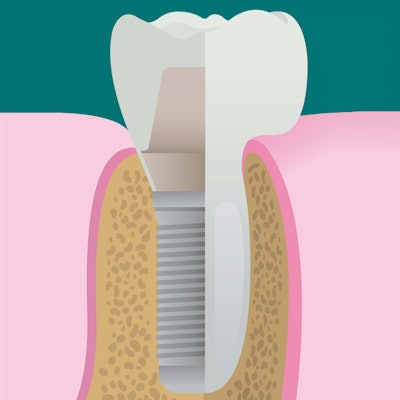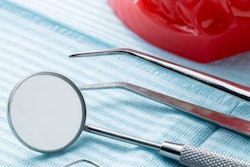
A peptide found in saliva may be the key to helping implants integrate with surrounding cells faster. Researchers found that oral cavity cells exposed to this specific peptide spread and adhered to titanium significantly better than those without it.
 Irene van Dijk, PhD.
Irene van Dijk, PhD.The researchers believe the peptide histatin 1 (Hst1) may one day have clinical applications that help with implant integration. Lead researcher Irene van Dijk, PhD, from the Academic Medical Center in Amsterdam, presented their findings at the recent 2017 International Association for Dental Research (IADR) meeting in San Francisco.
"Salivary peptide histatin 1 stimulates cells to attach and spread, which can be used to improve the integration of dental implants," she said in an interview with DrBicuspid.com. "Since histatin 1 also promotes cell-to-cell adhesion, it enhances the barrier function of the tissues, thereby protecting the body from negative influences from outside."
Promising early research
For an implant to be successful, surrounding cells must quickly integrate with the implant and create a barrier to prevent infection. Therefore, researchers are keen to find ways to help cells better spread onto and attach to an implant.
In a previous study, van Dijk and colleagues found that human oral cavity cells exposed to Hst1 quickly attached to a glass surface. Realizing that the peptide may be able to help with implant integration, the researchers tested how well the peptide helped the cells attach to titanium, which is commonly used for implants.
“Salivary peptide histatin 1 stimulates cells to attach and spread, which can be used to improve the integration of dental implants.”
After staining human, mouse, and canine gingival epithelial cells and fibroblasts, the researchers placed the cells on disks coated with titanium. They then added Hst1 to half of the disks and waited three hours. The researchers repeated the experiments at least three times with each of the cells.
After just three hours, the cells exposed to Hst1 adhered to the disks two times more often than the cells without Hst1.
Van Dijk was surprised that the difference was so large and that it was clearly visible on the disks. Histatin 1 also improved the spreading of the cells in mice, which don't naturally have the peptide in their saliva, she noted.
"Histatin 1 promotes the attachment and spreading of cells on different substrates, including titanium," van Dijk said. "This indicates that Hst1 could be used to improve implant integration."
Future plans for the peptide
Although promising, the research is still in the early stages. The researchers still have a limited understanding of how the process works, van Dijk explained. They also have yet to perform any in vivo studies.
However, because the peptide appears to work well on canine cells, van Dijk and colleagues have submitted a proposal to study histatin 1 and implants in animals. She is also already thinking about human applications, such as having an Hst1 implant coating or an injection.
"Our future plans involve looking into the mechanism by which histatin 1 performs its function," she said. "We would like to take it further toward being a possible treatment in the dental clinics by finding a partner, such as an implant company, with which we can develop the product together."



















